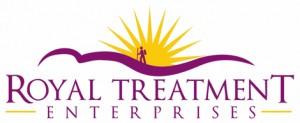THE TRUTH ABOUT MASSAGE
“It’s the attempt to live without illusions that I believe is the most dangerous but the most worthwhile and in some ways the most enjoyable undertaking, despite its risks, of all.”
Christopher Hitchens
When it comes to touch, most of us tend to tell lies. And not just to other people, but to ourselves as well. We lie about how sensual touch is. We lie about how essential it is, how we crave it like oxygen or sunlight. We lie about how important other people’s bodies are to our happiness.
I have decided, against all evidence to the contrary, that telling the absolute truth about massage as I see it shall be the best policy going forward. And it’s for this reason, wanting to cleave as closely to the truth as I can, to brush away as many illusions as possible, that I put forth my present understanding of what “massage” really is. After being a massage therapist, massage teacher, massage workshop leader and a writer of articles and books about massage for 30 years, I now see that just about everything I have believed about this field is a mirage. An illusion.
So what is massage actually? What can truthfully be claimed for it? Take a look at Paul Ingraham’s excellent web site here. He will set you straight about what massage can and cannot accomplish. His site is science-based and filled with facts that are hard to dispute.
And if you want a more irreverent view on this topic, here’s how I put it in TOUCHY SUBJECTS:
Massage is well-intentioned touch with pressure. End of story. Any health benefits that massage may offer are the benefits created by this touch with pressure. All other claims made for massage, be they mystical or medical, are unsubstantiated. Take “improves the circulation,” for example. Think about it. Does massage somehow unblock clogged arteries? Build stronger cardiac tissues? Widen blood vessels? No. What it does do is stimulate circulation by pushing blood around the body, but many things do that, like jumping jacks, for instance, or walking down to the corner store to buy a six-pack of Miller Lite.
When a massage therapist tells you she’s going to “align your energy” or “detoxify” you, the proper response is to say, “Prove it.” Or “What the hell are you talking about?” Even if the answer she gives sounds vaguely plausible or even scientific, I guarantee you it’s a bunch of hooey. Ask for one peer-reviewed study published in a respectable journal verifying her claim, just one. You won’t get it. Nevertheless, most people just nod their heads and agree. When someone in the health field, even a massage person, tells you something about your body, chances are you’re going to accept it. But, dear reader, you should not.
Ever heard of Reiki? In this technique, the therapist doesn’t even have to touch her client. A magical healing energy shoots out several feet from her hands, or sometimes even over the phone during advanced Reiki-at-a-distance sessions, which can be expensive. The benefits of these techniques, and others like them, are not scientifically proven, and a new breed of skeptics has arisen to question their validity. I corresponded with one of them, Dr. Steven Novella, MD, president and co-founder of the New England Skeptical Society. He’s also an academic clinical neurologist at Yale University School of Medicine. According to Dr. Novella, “Any documented benefits of massage may be generic to just being touched in the context of a positive therapeutic interaction.” So, just what are those documented benefits? According to Dr. Tiffany Field of the Touch Research Institute at the University of Miami Medical School, well-intentioned touch with pressure:
· Stimulates Pacinian corpuscles (pressure sensors in the skin), which helps lower blood pressure and slow heart rate through actions via the vagus nerve
· Helps increase the release of the neuropeptide oxytocin, which promotes in-group bonding (on the down-side, this same function may help increase out-group antagonism)
· Increases serotonin and catecholamine dopamine, lessening pain
· Increases serum insulin in premature babies, helping them grow faster
· Lowers levels of the neuropeptide known as substance P, which causes pain
· Increases the number of natural killer cells, strengthening the immune system
· Relaxes muscle tissues
Some of the findings of the Touch Research Institute have recently been questioned by other researchers. Whichever benefits may ultimately be proven for massage, however, it’s important to remember that they are created by touch with pressure alone, not some mystical, esoteric force or some highly-skilled pseudo-medical manipulations. Massage “works” because touch works. It feels good because touch feels good. And a good massage therapist is simply a competent, sensitive toucher.

